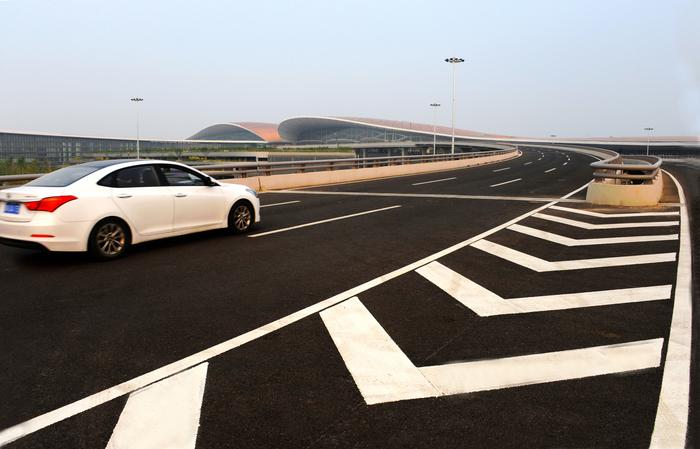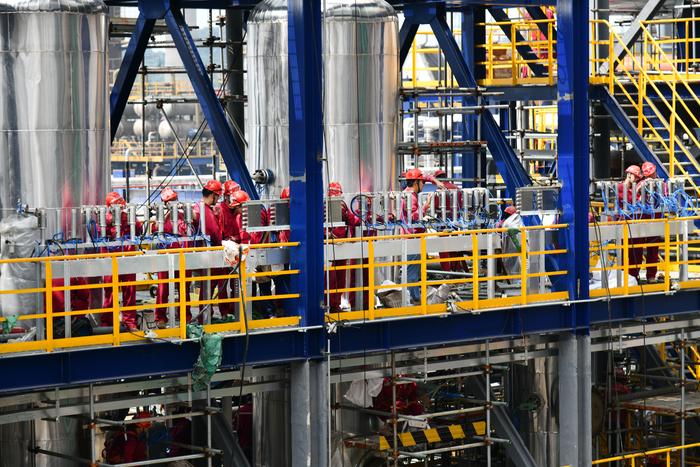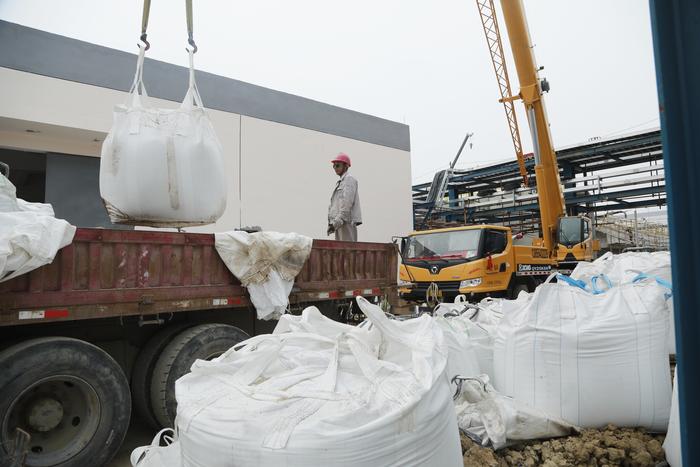|
| 2019-07-19 来源: 中国石化新闻网 |
| 石化新闻 |
|
中国石化新闻网讯 据今日油价7月17日报道,印度近75%的电力仍然来自煤炭。尽管燃煤发电仍在增长,但“雄心勃勃”的清洁能源政策和不断下降的太阳能成本可能很快就会阻止这一趋势。 由于印度经济和人口的快速增长,该国对能源的需求将在未来10年翻一番,因此在不久的将来彻底摆脱对煤炭的依赖似乎是一个太大的挑战。 然而,这是一个进入可再生能源市场的绝佳时机——尤其是太阳能,一年有近300天的日照。并且印度总理纳伦德拉·莫迪正在推动印度进一步进入可再生能源领域。 印度最大的清洁能源公司ReNew Power利用这一机会,仅今年就为其风能和太阳能业务筹集了逾10亿美元资金,在推动印度发展可再生能源方面发挥了自己的作用。 部分资金来自高盛、阿布扎比投资局和加拿大养老金计划投资委员会。6月底,这三家机构各自向现有的项目注资1亿美元。 今年早些时候,ReNew Power从美国政府发展融资机构海外私人投资公司(OPIC)获得3.5亿美元资金,并通过发行绿色债券获得3.75亿美元。2016年3月,OPIC获得了2.5亿美元的贷款,用于更新风力和太阳能发电厂的建设。 ReNew董事长兼创始人苏曼特•辛哈(Sumant Sinha)表示:“从历史上看,印度的能源一直以煤炭为基础,主要用于发电。但现在可再生能源变得如此便宜——大约比煤炭便宜30%或40%,未来很大一部分需求将通过可再生能源来满足。” 新能源在印度能源转型中扮演着重要角色,拥有超过7千兆瓦的风电和太阳能资产,并拥有广泛的股权投资者基础。在8年的运营中,ReNew Power运营了100多家风力和太阳能发电厂,发电量约占印度总发电量的1%。 其他公司也参与了印度的能源竞争。主权财富基金新加坡政府投资公司(GIC Holdings Pte. Ltd .)和阿布扎比投资局(Abu Dhabi Investment Authority, ADIA)已同意向印度可再生能源公司Greenko Energy Holdings再注资3.29亿美元。今年6月,这两家主权财富基金向Greenko Energy Holdings投资4.95亿美元,用于建设储能项目。 根据世界经济论坛的数据,印度的太阳能发电成本最低。2018年,得益于从中国进口的低价太阳能电池板加上丰富的土地和国内廉价劳动力,印度建造大型太阳能设施的成本同比下降27%。2010年至2018年间,印度的太阳能设施安装成本下降了80%,是所有国家中降幅最大的。 印度的太阳能发电能力也从2015年的不足4千兆瓦增加到近30千兆瓦,约占其总能源的8%。印度在可再生能源上投入巨资,正在制定一个更大的目标:到2022年,可再生能源发电能力达到175千兆瓦,其中太阳能发电能力达到1亿兆瓦,风能发电能力达到6000千兆瓦,生物燃料发电能力达到1000千兆瓦,水电发电能力达到5千兆瓦。 “我们正在以非常、非常大的力度加快可再生能源的发展步伐,”印度国家转型研究所(National Institution for transform India)首席执行官阿米塔布•康德(Amitabh Kant)表示,“印度最大的优势不是煤炭,而是太阳能。我认为,在未来三到四年,你会意识到可再生能源的发展速度将是惊人的。” 尽管印度的煤炭行业显示出苦苦挣扎的迹象, 据全球煤炭工厂跟踪数据显示,印度的煤炭产能为220千兆瓦,另有36.12千兆瓦在建。过去8年中,印度的煤炭产能被取消了491千兆瓦,但无法断定煤炭将会在未来消失。印度是世界第二大生产国和进口国,仅次于中国。 根据IEA的预测,印度预计到2040年能源需求将增长一倍,这意味着即使可再生能源有所增加,印度仍将需要大量煤炭作为其主要能源。 洪伟立 摘译自 今日油价 原文如下: India’s Solution To A 100% Surge In Energy Demand Nearly 75 percent of power in India is still generated from coal. While coal-fired power generation is still growing, ambitious clean energy policies and falling solar costs could soon stop this trend. Since demand for energy in India is set to double over next decade caused by the rapid growth of its economy and population, its complete rejection of coal dependence in the near future seems far too big of a challenge. However, this is a perfect timing for the entrance of renewables—especially solar—with almost 300 days of sun a year and with Prime Minister Narendra Modi who is pushing his country further into renewable energy. India’s largest green energy producer, ReNew Power, used these circumstances to raise more than $1 billion in funds this year alone for its wind and solar business, performing its part in pushing this country towards renewable energy. Part of the funds were secured from Goldman Sachs, Abu Dhabi Investment Authority, and Canada’s Pension Plan Investment Board, who injected $100 million each at the end of June for financing projects within its existing pipeline. ReNew Power secured another $350 million earlier this year from existing investor OverSeas Private Investment Corp (OPIC), the U.S. government's development finance institution, and another $375 million by issuing green bonds. It followed previous loan from March 2016 when OPIC granted a loan of $250 million to ReNew Power for the construction of new wind and solar power plants. “Historically, India’s energy has been based on coal, primarily for generating electricity,” said Sumant Sinha, ReNew Chairman and founder. “But now renewables have become so much cheaper, about 30 or 40% cheaper than coal, that going forward a large part of the demand is going to be met through renewable energy sources.” With a total capacity of over 7 GW of wind and solar power assets across the country and a broad base of equity investors, ReNew Power is a significant player in energy transition of India. In eight years of operations, ReNew Power operates more than 100 wind and solar plants generating about 1 percent of India's total electricity. Other companies are also getting involved in the Indian energy race. Sovereign wealth funds GIC Holdings Pte. Ltd and Abu Dhabi Investment Authority (ADIA) have agreed to pump in an additional $329 million into Greenko Energy Holdings, which follows the $495 million investment in June by the sovereign wealth funds in Greenko to build power storage projects. According to World Economic Forum data, India is producing the cheapest solar power. The costs of building large-scale solar installations in India fell by 27% in 2018, year-on-year, thanks to a combination of low-priced panel imports from China, abundant land, and cheap labor. Between 2010 and 2018, setup costs in India fell by 80%, the most precipitous decline of any country. India also increased its solar energy capacity from less than four GW in 2015 to nearly 30 GW, which is about 8 percent of its total energy capability. Investing heavily in renewable energy, India is setting an even bigger goal of 175 GW of renewable energy by 2022, with 100 GW to come from solar power, 60 GW from wind, 10 GW from biofuels, and 5 GW from hydropower. "We are accelerating the pace of renewables in a very, very big way," said Amitabh Kant, CEO of National Institution for Transforming India. "India's biggest strength is not in coal but in the sun. I think in the next three to four years you will realize that the acceleration towards renewables will be phenomenal." Although the coal sector in India is showing signs of struggling, with 220 GW of coal capacity in operation and another 36.12 GW under construction, and seeing 491 GW cancelled in the last eight years, according to Global Coal Plant Tracker data, it is unlikely to expect that coal will disappear in India, the world's second largest producer and importer after China. According to the International Energy Agency forecast, India is expecting doubled demand for energy by 2040, which leaves a lot of need for coal as the main energy source, even with an increase in renewables.
|








